Ice Climbing Guide: Everything You Need To Know
Ice climbing is one of the most exhilarating winter sports out there. It combines an appreciation of incredible natural landscapes with a challenging adrenaline-pumping activity.
If you’re an avid hiker, rock climber, or winter sports enthusiast and want to know how to see the Norway fjords, then trying ice climbing should definitely be on your bucket list. It’s certainly not an easy sport, and it requires specialized training, equipment, and skills.
However, when you experience what it’s like to ascend a frozen waterfall, there are few other feelings of accomplishment that compare, making it some of the best months to visit Norway for winter activities.
This ice climbing guide covers everything you need to know about how to get started with this thrilling sport.
What is Ice Climbing?
Ice climbing is an extreme outdoor sport that involves ascending frozen Norway fjords waterfalls, ice-covered rock faces, or other icy formations using specialized techniques and tools.
Climbers rely on ice axes and crampons for grip, employing a combination of front-pointing and ice axe swings to navigate the challenging, frozen terrain.
Safety is a paramount concern in ice climbing, with climbers trained to assess ice conditions and Norway fjords weather, use proper belaying techniques, and manage ropes for protection while tackling routes of varying difficulty, typically graded on a scale known as WI (Water Ice).
It's a physically demanding and exhilarating activity that requires a strong balance of strength, endurance, and technical skills.
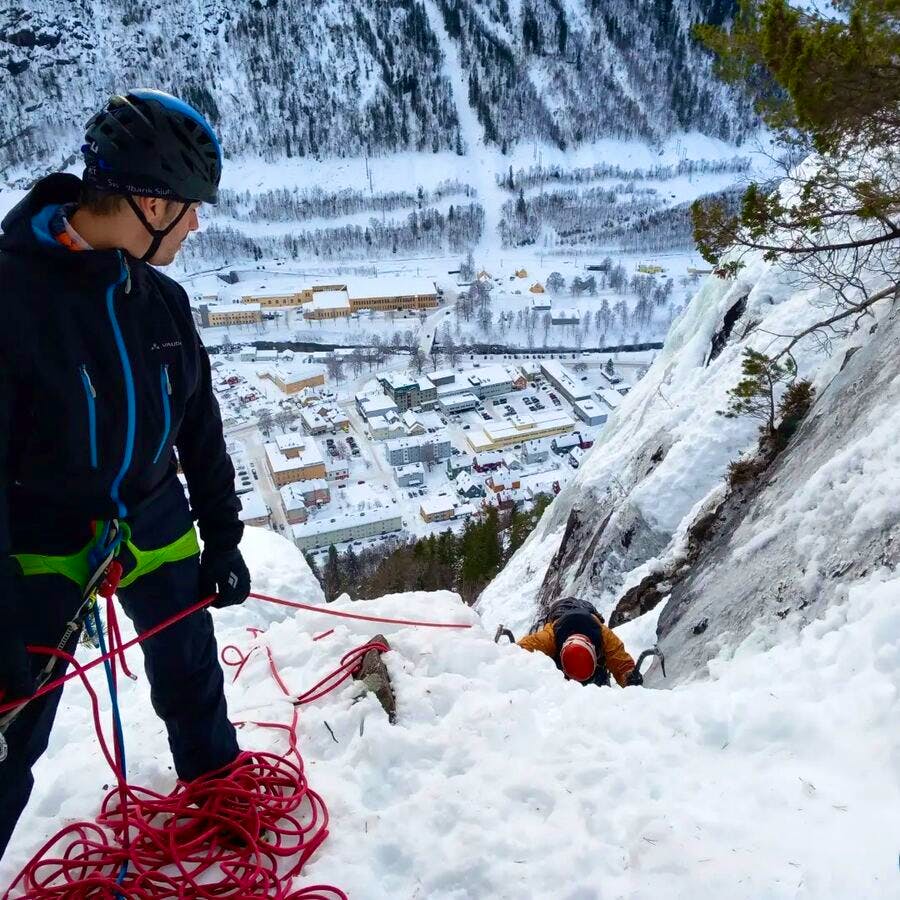
How to Learn Ice Climbing
Learning ice climbing requires a combination of training, practice, and safety awareness. Unfortunately, no ice climbing guide can teach you exactly how to do this - it’s a tough skill that requires plenty of hands-on experience.
To help you get started with ice climbing, here are the most important steps to follow.
Take a Course
No ice climbing guide can teach you what experienced ice climbers can. Taking a specialized ice climbing Norway course for beginners is the best way to get comfortable doing this sport.
Enroll in an introductory ice climbing course taught by certified instructors. These courses cover essential skills, safety procedures, and equipment use.
You'll learn how to use ice axes, crampons, and ice screws, as well as fundamental ice-climbing techniques.
Start with Basic Climbing Skills
Prior experience in rock climbing or mountaineering can be beneficial, as it provides a foundation for understanding rope work and climbing techniques.
If you're new to climbing in general, consider taking a rock-climbing course first.
You’ll also get value with plenty of experience fjords Norway hiking in cold, snowy climates in some of the most famous Norwegian fjords.
For example, if you start by gaining experience in rock climbing and Norway hiking, you’ll be in a far better position to switch to ice routes.
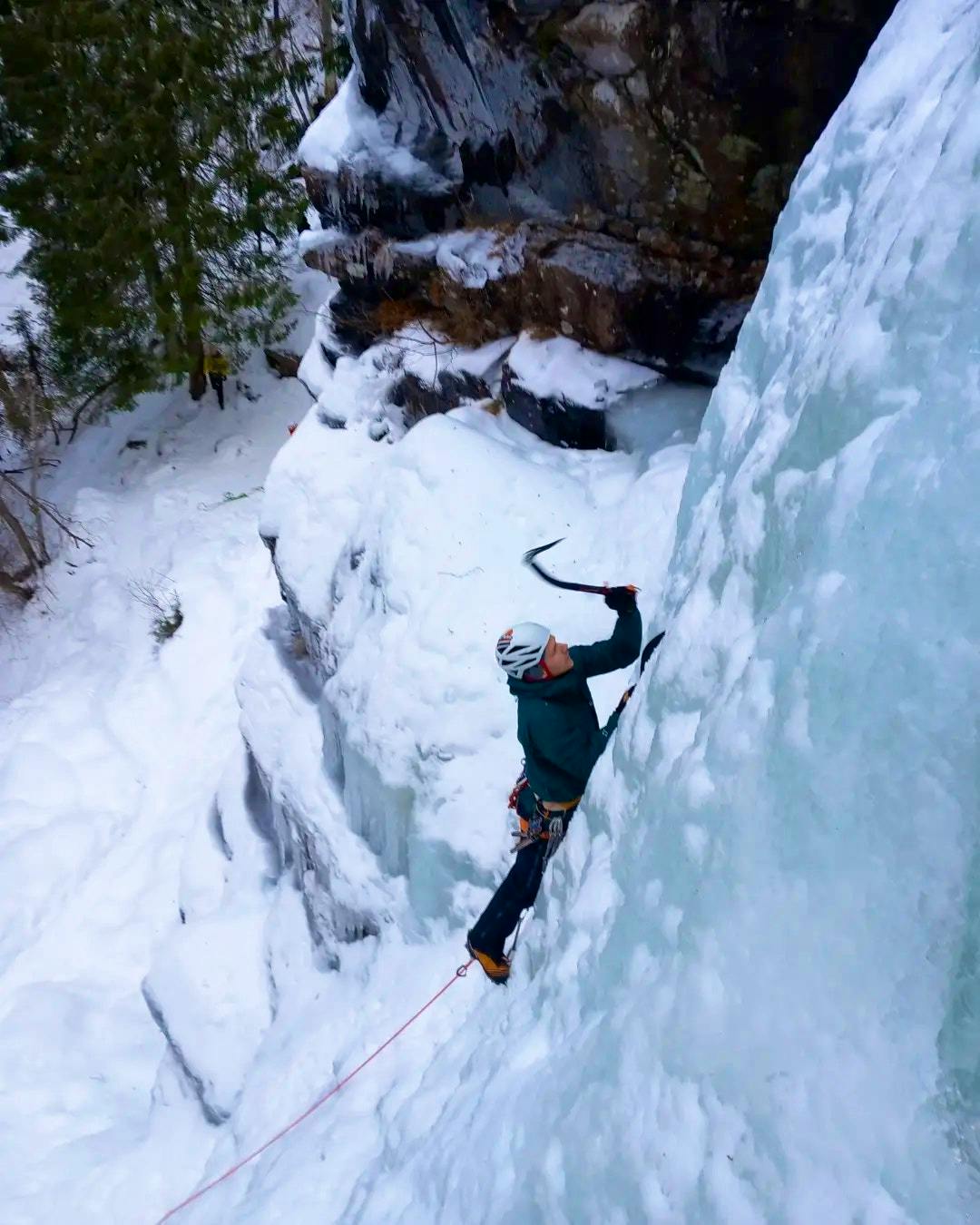
Get the Right Gear
Ice climbing can only be done with specialized ice climbing equipment. And with such a potentially dangerous sport, you need to make sure you have the right equipment available in order to perform at your best.
Invest in appropriate clothing and gear for cold conditions. Dress in layers to stay warm and dry.
You may need to rent or purchase climbing equipment, such as ice axes, crampons, helmets, harnesses, and boots designed for ice climbing. If you take a course, your ice climbing guide will supply this gear for you.
Begin with easy or low-grade ice climbing routes (WI1 or WI2) to build your confidence and technique. Work on your balance and coordination while ascending straightforward ice formations.
Progress Gradually
As is the case with any sport, you start small and work your way up. This is especially true with ice climbing, as the difference between beginner and advanced climbing routes can be immense.
As you gain experience and confidence, gradually tackle more challenging routes. Push your limits, but always prioritize safety. Going straight into an advanced climb is dangerous, and could make you instantly lose interest in ice climbing.
You’ll also need to learn how to assess ice conditions, recognize avalanche hazards, and practice self-rescue techniques. Understanding the hazards of ice-climbing routes is a vital part of this activity.
Learn from Experienced Climbers
Join a climbing community or connect with experienced ice climbers. They can offer guidance, share valuable tips, and provide mentorship as you progress in the sport.
Being able to interact with and ask questions to experienced ice climbers can go a long way in developing your skills and building confidence in the sport.
Stay Informed
Keep up with the latest developments in ice climbing, including safety protocols and gear innovations. Attend workshops, seminars, or outdoor events to expand your knowledge and continually sharpen your ice-climbing skills.
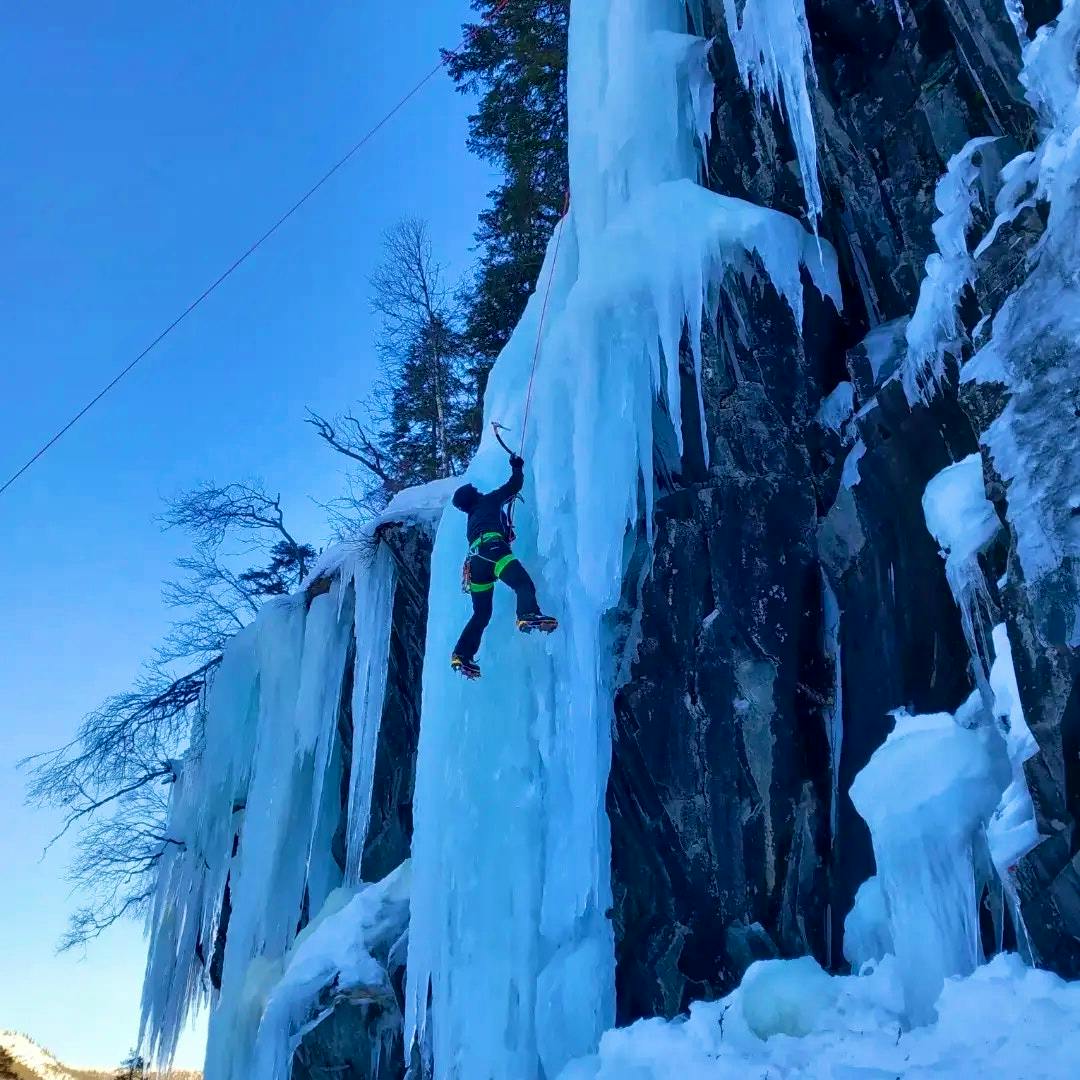
Practice Safety First
Ice climbing can be dangerous, so always prioritise safety.
Ensure your equipment is well-maintained, double-check knots and anchors, and be aware of avalanche risks in winter climbing environments.
You’ll also need to have other experienced ice climbers to climb with - as it’s certainly not a sport you can do alone.
Respect the Environment
As an ice climbing guide, it’s essential to mention that this sport is all about respecting and appreciating nature.
Be mindful of the natural surroundings and leave no trace. Respect access restrictions and local regulations, and practice ethical climbing behaviour.
Stay Fit and Build Strength
Ice climbing demands physical fitness, so maintain good overall strength and endurance through regular exercise and conditioning.
When you’re not actively climbing, build your strength and you can work on building your strength. Practicing in indoor climbing gyms can be a great way to do this.
Remember that ice climbing is an adventure sport with inherent risks, so take your time to learn and progress.
It's essential to develop your skills gradually and not rush into challenging climbs without the necessary experience.
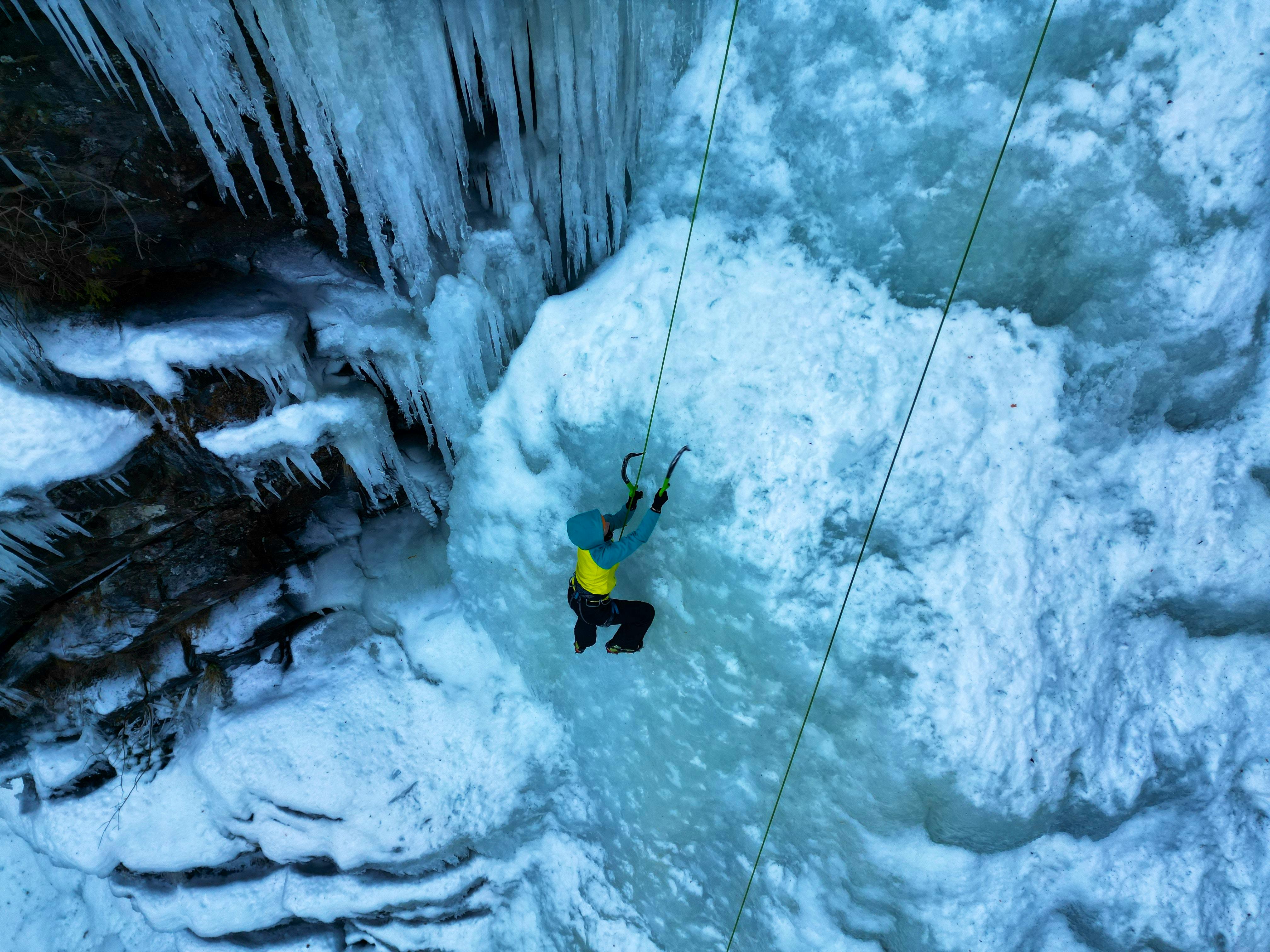
What Gear Do You Need for Ice Climbing?
As mentioned above, ice climbing requires specialized gear to ensure safety and efficiency in challenging and icy conditions. Here is a list of essential gear for ice climbing.
Climbing Helmet
A climbing helmet is crucial to protect your head from falling ice, rock, or equipment. It also provides safety when climbing in tight spaces.
Climbing Harness
A climbing harness is used to attach yourself to the rope and is an important part of the belaying system.
Ice Axes
Ice axes have a curved shaft and a pick on one end, which is used to create holds in the ice. Climbers typically use two ice axes for balance and stability.
Crampons
Crampons are attached to climbing boots to provide traction on ice and hard snow. They have sharp points and come in various designs, including mono-point and dual-point configurations.
Ice Screws
Ice screws are used to create anchor points in the ice for protection and safety. They come in various lengths and are crucial for securing ropes and protecting against falls.
Belay Device
A belay device is used to manage the rope when belaying a partner or rappelling. Common types include tubular devices and auto-blocking devices.
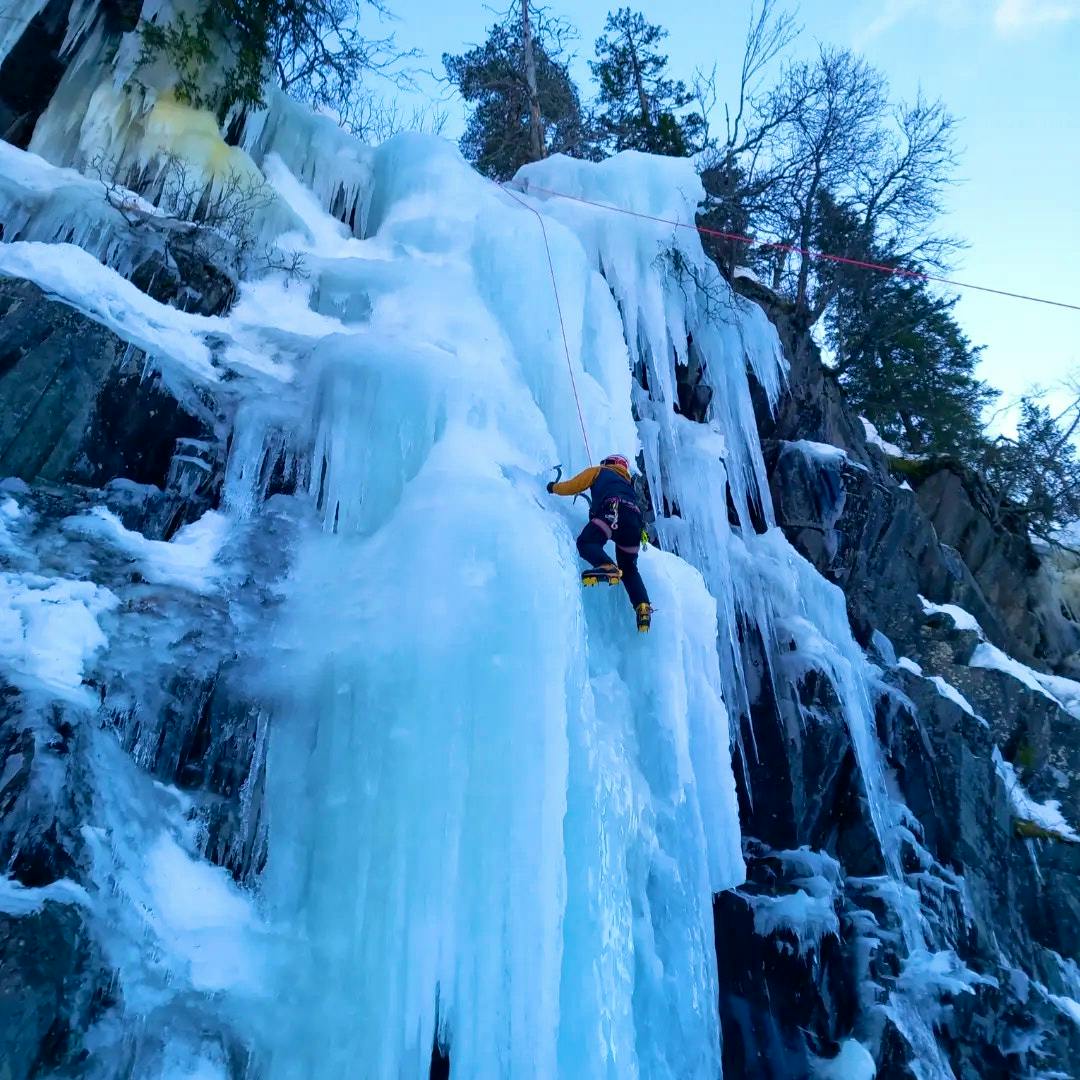
Carabiners
Locking carabiners are used to attach your harness to the belay or rappel device and to connect yourself to protection points in the ice.
Ropes
Specialized climbing ropes designed for ice climbing are dynamic and have a good balance of strength and flexibility. Twin and half ropes are commonly used to provide redundancy in case of falls.
Ice Tool Leashes or Tethers
These are attached to your ice tools to prevent them from falling if you lose your grip or drop them.

Latest Deals
Gloves
Insulated and waterproof gloves are essential to protect your hands from the cold, as well as from sharp ice. Consider having a thinner pair for dexterity and a thicker, warmer pair for extreme cold.
Boots
Ice climbing boots are specifically designed to be rigid and insulated, providing warmth and support while allowing for the attachment of crampons.
Clothing
Layered clothing is vital to regulate your body temperature. You'll need moisture-wicking base layers, insulating mid-layers, and a waterproof and insulated outer layer to keep dry and warm.
Gaiters
Gaiters cover the lower part of your pants and the top of your boots to keep snow and ice out.
Backpack
A small, durable climbing backpack is useful for carrying additional clothing, food, water, and other essentials.
Avalanche and Safety Equipment
In areas prone to avalanches, you'll need avalanche safety gear, including a transceiver, probe, and shovel.
A headlamp is useful for early morning or late evening climbs and emergencies. Always carry a basic first aid kit for minor injuries or emergencies.
It's essential to invest in quality gear and have it regularly inspected and maintained for safety.
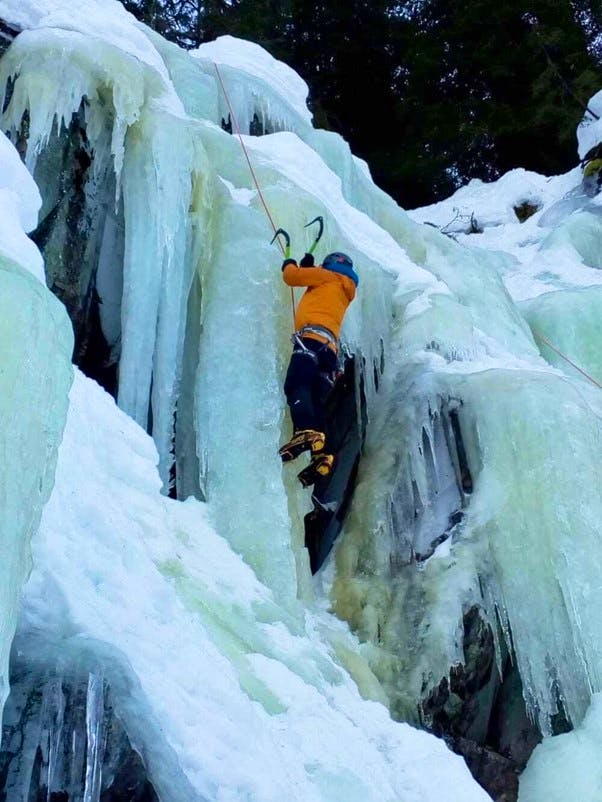
Best Ice Climbing Destinations
Ice climbing is a very niche activity, as there are few places in the world that offer the right conditions for this sport.
If you're interested in experiencing ice climbing, then here are some of the best destinations to do it.
Norway
Norway boasts breathtaking ice-climbing opportunities, especially in areas like Rjukan and Hemsedal.
Rjukan, in particular, is renowned for its countless icefalls, offering routes for climbers of all levels, making it one of the 10 best places to visit in Norway.
The country's diverse landscapes and reliable ice conditions make it a top choice for ice climbers. This is absolutely one of the best things to do in Norway in winter.
If you’re adventurous, you could also combine ice climbing with kayaking in Norway, hunting for the Norway fjords Northern Lights, or wild camping in Norway fjords.
Canada
Canada is another prime destination for ice climbing, with places like the Canadian Rockies in Alberta, the Columbia Icefields in Jasper National Park, and the Ghost River Valley near Calgary.
These regions offer a wide range of ice-climbing experiences amidst stunning mountain scenery.
Switzerland
Switzerland's alpine landscapes provide ice climbers with a variety of options, including the famous icefall routes in the Valais region and the Bernese Oberland. The Swiss Alps offer some of the most picturesque ice-climbing opportunities in Europe.
United States
In the U.S., Ouray in Colorado is known as the "Ice Climbing Capital of the World" and offers numerous ice routes in the Uncompahgre Gorge.
Other notable ice-climbing destinations include New Hampshire's White Mountains and the Hyalite Canyon in Montana.
France
The French Alps offer numerous ice climbing routes, particularly in Chamonix, Ecrins, and the Massif du Mont Blanc. Climbers are treated to both technical and visually stunning ice formations.
Scotland
The Scottish Highlands provide a unique ice climbing experience. The Cairngorms, Ben Nevis, and Glencoe are known for their challenging mixed and ice routes, making Scotland a sought-after destination for seasoned climbers.
Iceland
Iceland offers ice climbers the chance to explore frozen waterfalls, glaciers, and ice caves. The Vatnajökull Glacier in the southeast and Skaftafell National Park are popular ice-climbing locations.
Russia
The Russian Caucasus region, particularly around the Elbrus and Bezengi areas, presents ice climbers with challenging routes amidst stunning mountain scenery.
Alaska, USA
Alaska is renowned for its ice-climbing opportunities in places like the Matanuska Glacier and the Keystone Canyon in Valdez. The state's vast wilderness provides climbers with unique adventures.
Sweden
The frozen waterfalls and ice-covered cliffs in northern Sweden, including the Abisko National Park, are known for their ice-climbing potential and excellent camping Sweden Norway locations.
When planning an ice climbing trip, it's essential to consider factors like the season, weather conditions, and the specific type of ice climbing experience you desire.
Each destination offers its own unique blend of challenges and natural beauty, catering to climbers of varying skill levels.
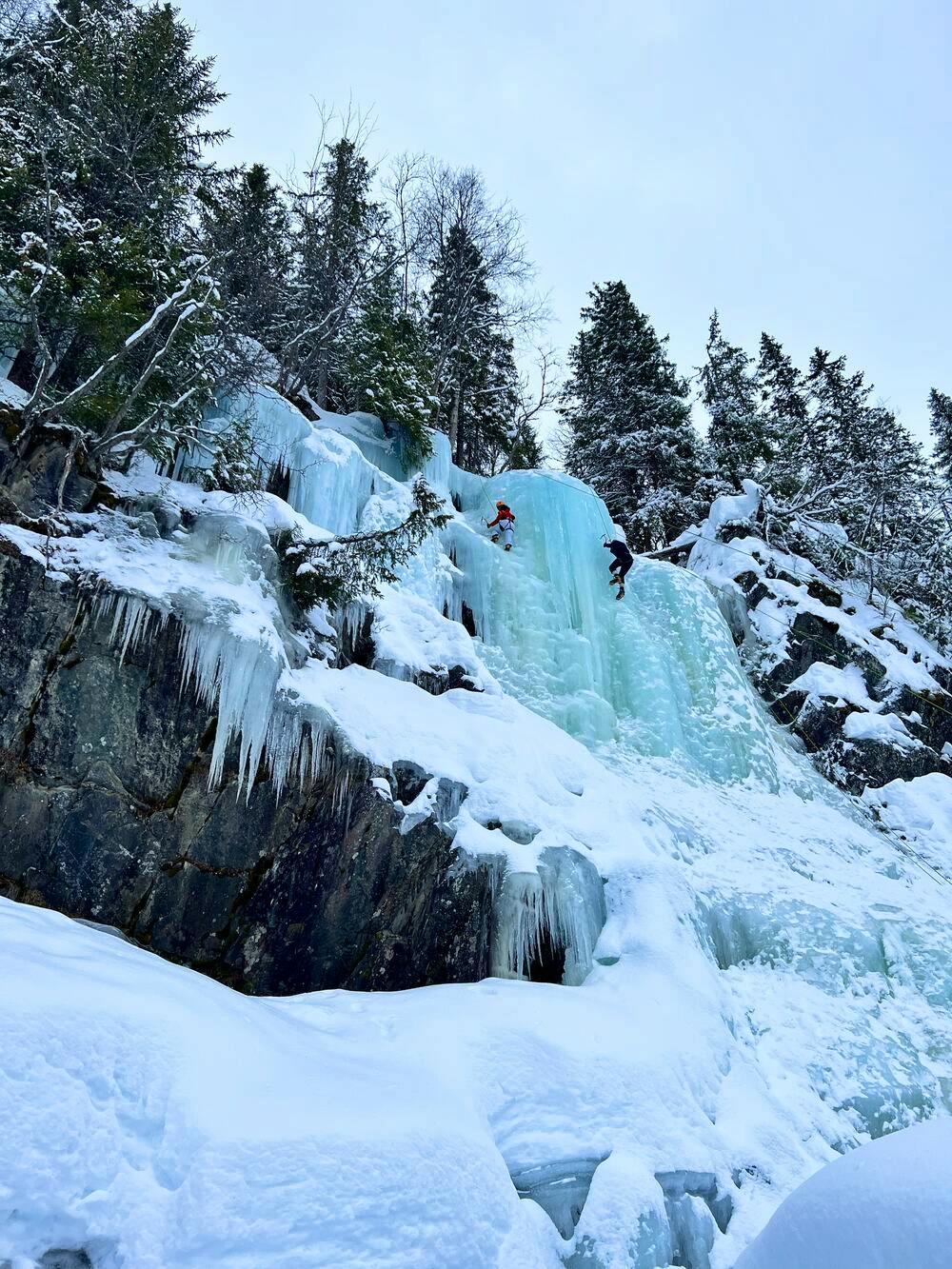
What Skills and Techniques Will You Learn in Ice Climbing?
If you take a course, your ice climbing guide will cover a range of different skills to help you ascend frozen terrains. There’s a lot that goes into ice climbing.
Here are some of the most important skills and techniques you’ll have to learn.
Using Ice Tools
Learning how to effectively wield ice tools (ice axes) is fundamental. This includes proper gripping techniques, such as the dagger, flick, and match, to create secure placements and maintain balance while ascending.
Crampon Techniques
Mastery of crampon techniques is essential for maintaining traction on ice and hard snow. Techniques like front-pointing (using the front spikes) and French technique (heel-down) are crucial for efficient climbing.
Belaying
Understanding belaying techniques is critical for both safety and facilitating the climbing process. This includes using belay devices, belay commands, and rope management.
Ice Screw Placement
Proper placement of ice screws is essential for creating secure anchor points and protecting against falls. Learning to assess ice quality and determine ideal screw placement is crucial.
Anchor Building
Ice climbers must know how to construct anchors using ice screws, ice threads, or other natural features. Anchors are used for setting up belay stations and ensuring safety during climbs.
Ice Climbing Movement
Developing efficient ice-climbing movement is vital for conserving energy and maintaining balance. This includes techniques for swinging the ice tools, kicking steps with crampons, and performing delicate footwork.
Mixed Climbing
Mixed climbing combines ice and rock elements, requiring the ability to switch between ice tools and traditional rock-climbing techniques. This skill is valuable when transitioning between different types of terrain.
Route Reading
Learning how to assess ice conditions and determine the best line of ascent is crucial for choosing a safe and feasible route. It involves recognizing the ice's structure and quality.
Avalanche Awareness
In areas prone to avalanches, ice climbers must understand avalanche risk factors, practice safe route selection, and carry avalanche safety equipment like transceivers, probes, and shovels.
Self-Rescue Techniques
Being equipped with self-rescue skills is essential for dealing with unforeseen situations or assisting others in emergencies. This includes techniques like ascending ropes, escaping belays, and providing assistance to injured climbers.
Safety Protocols
Ice climbers should be well-versed in safety protocols and emergency procedures, such as communication signals, emergency shelter building, and treatment of cold-related injuries.
Knot Tying
Knowing how to tie various climbing knots, including the figure-eight knot, clove hitch, and overhand knot, is necessary for securing ropes and attaching to anchors.
Efficient Resting
Learning when and how to rest during a climb is important for conserving energy. Using rests and "shakeouts" strategically can improve endurance on long routes.
Mental Preparation
Ice climbing demands a strong mental focus and the ability to manage fear and stress. Developing mental resilience is a key aspect of the sport.
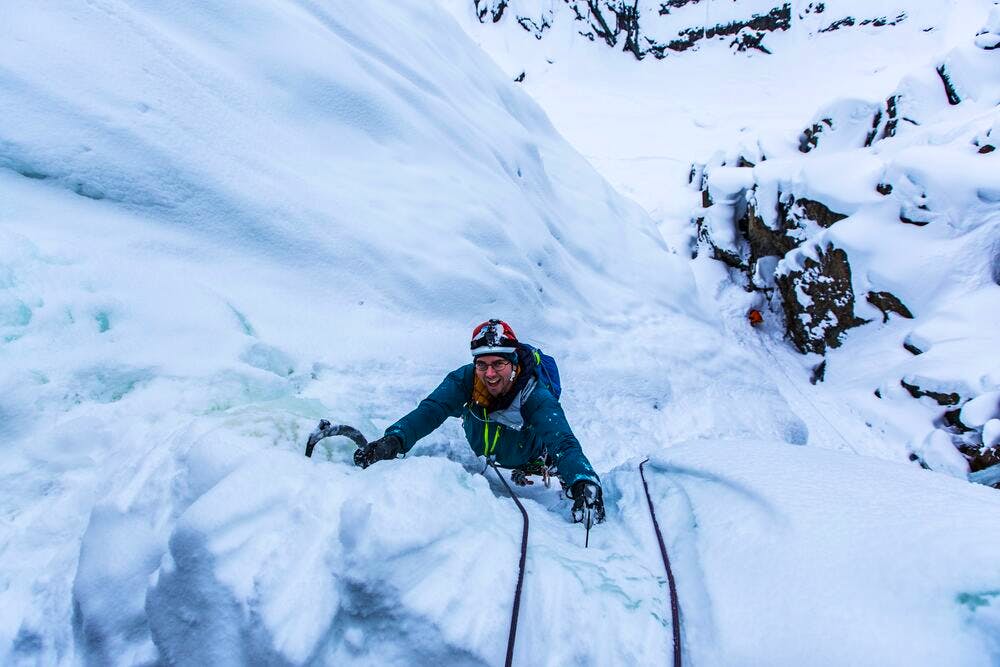
Conclusion
There’s a lot that goes into ice climbing, including various skills, gear, and safety knowledge. This ice climbing guide covers all the essentials of what you need to know to get started. However, taking a specialized ice climbing course is definitely the best approach.
Whether you’re interested in trying ice climbing for the first time or want to sharpen your ice climbing skills, this is a sport that remains challenging and exciting no matter what your experience and one of the best things to do in Norwegian fjords.
And no matter what route you take, taking an ice climbing course with Skyhook Adventure is always an incredibly rewarding experience in winter, the best time to travel to Norway fjords.
Read More Norway Articles:
Find your next adventure
Why Skyhook?
Join over 27,000 Skyhook adventurers who've used our platform to book directly with our vetted local guides, at local prices (we never markup).
Expert Local Guides
Experienced local guides, handpicked by us.
Best Prices
Never pay a markup on the local guide's price.
Exclusive Club
Earn loyalty rewards every time you travel.
Great Social Vibes
Small group tours provide a richer experience.
Stellar Feedback
Over 2,800 reviews, average of 4.9/5 stars.












